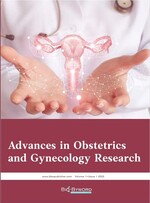Abstract
Objective: To compare and analyze the clinical efficacy and complication rate of abdominal myomectomy with those of laparoscopic myomectomy in uterine fibroids. Methods: This study was carried out from January 2021 to January 2023 on 150 patients with uterine fibroids. The patients were divided into two groups, a study group (n = 75) and a control group (n = 75), by digital table grouping. Patients in the control group underwent abdominal myomectomy, whereas patients in the study group underwent laparoscopic myomectomy. Surgery-related indicators, incidence of complications, ovarian function indicators, recurrence rate, and pregnancy rate were compared between the two groups. Results: The surgery-related indicators of the study group were lower than those of the control group (P < 0.05 ); the incidence of postoperative complications was lower in the study group than in the control group (P < 0.05); the postoperative ovarian function indicators of the study group were lower than those of the control group (P < 0.05); there were no significant differences in postoperative recurrence rate and pregnancy rate between the two groups (P > 0.05). Conclusion: For patients with uterine fibroids, abdominal myomectomy and laparoscopic myomectomy have similar recurrence and pregnancy rates, but laparoscopic myomectomy can shorten the recovery time and reduce the incidence of complications and the impact on ovarian function. Therefore, the latter should be applied in clinical settings.
References
Yang L, Song A, 2022, Effect of Laparoscopic Myomectomy on Uterine Microcirculation and Re-Pregnancy Outcomes of Patients. Guizhou Medicine, 46(8): 1218–1219.
Zhang X, 2022, Comparison of Myoma Residual and Recurrence and Pregnancy Outcome After Laparoscopic and Open Myomectomy. Contemporary Medicine, 28(11): 46–48.
Zhang S, Yan J, Zhao Q, 2022, Effect of Laparoscopic Myomectomy on Endocrine in Patients with Uterine Fibroids. Electronic Journal of Practical Gynecology Endocrinology, 9(7): 18–20.
Liu Z, 2022, The Effect of Laparoscopic Uterine Artery Ascending Branch Occlusion Combined with Myomectomy in the Treatment of Patients with Uterine Fibroids. China Minkang Medicine, 34(10): 65–67.
Dai A, 2022, The Effect of Laparoscopic Minimally Invasive Myomectomy in the Treatment of Uterine Fibroids on the Stress Response of Patients. Electronic Journal of Practical Gynecology Endocrinology, 9(16): 8–11.
Yuan J, Hu C, Li Q, et al., 2022, Efficacy of Minimally Invasive Laparoscopic Myomectomy in the Treatment of Uterine Fibroids and Its Impact on the Stress Response of Patients. Contemporary Medicine, 28(16): 72–74.
Liu X, 2022, The clinical Effect of Laparoscopic Ablation in Patients with Uterine Fibroids and Its Impact on the Body’s Stress Response. Baotou Medicine, 46(2): 39–40.
Quan G, 2022, Comparative Evaluation of Clinical Effects of Laparoscopic Myomectomy and Traditional Abdominal Enucleation in the Treatment of Uterine Fibroids. Chinese and Foreign Women’s Health Research, 2022(22): 35–36 + 41.
Liu Y, Zhang X, Liu L, et al., 2022, Meta-Analysis of the Clinical Effect of Laparoscopic Myomectomy and Vaginal Myomectomy in the Treatment of Uterine Fibroids. China Journal of Oncology, 14(5): 463–473.
Zhang Y, 2021, Clinical Efficacy Analysis of Laparoscopic Myomectomy and Traditional Laparotomy for Uterine Fibroids. China Medical Device Information, 27(12): 135–136.
